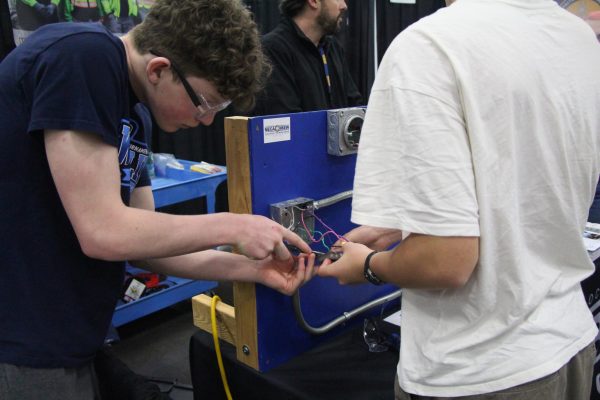Democrats win supermajorities
Oregon Democrats won a supermajority of ⅗ in the senate. Voter turnout was about 60 percent, while it only reached approximately 49 percent in the last midterm elections in 2014. This increased rate of voter turnout should mean that Oregon’s government reflects the needs of its citizen. What does that mean in terms of policies?
Rob Wagner was re-elected senator of district 19, comprised of West Linn, Lake Oswego, Tualatin, Southwest Portland, Rivergrove, Durham, and the Stafford Hamlet. Wagner stands for improved sexual education, wide ranging healthcare access, and is pro-choice, according to his testimonials. He also describes himself as having a vested interest in the environment, and tax equality on his campaign website.
The Oregonian reports that taxes will likely increase under a Democratic majority, saying that it’s been a priority of the party in the past.
Democrats also took a supermajority in Oregon’s house of representatives in the midterm elections. While already holding a majority of 35:25 in 2016, Democrats advanced to hold 2/3’s of the house.
In district 37, Rachel Prusak was elected over Julie Parrish as state representative. Prusak advocates for affordable health care, and increased funding for education.
Parrish was the Republican candidate, and has been involved in Oregon politics since being elected as Deputy Leader for the House Republican caucus in 2010.
This could mean higher graduation rates and smaller class sizes, but it could also result in higher taxes in order to make this happen.
While many of Oregon’s representatives remained the same, Kate Brown was re-elected as governor, and Wagner as Senator. However, Prusak’s victory over Parrish could result in change.
Your donation will support the student journalists of West Linn High School. Your contribution will allow us to continue to produce quality content by purchasing equipment, software, and continuing to host our website on School Newspapers Online (SNO).

Matilda Milner, senior, has been on the wlhsNOW staff since the first day of her freshman year of high school. Rising through the ranks, she has now arrived...

Amateur magician and wannabe improv comedian Philip Chan has been writing for The Amplifier since his freshman year. Now co-editor in chief, Chan firmly...

























![Game, set, and match. Corbin Atchley, sophomore, high fives Sanam Sidhu, freshman, after a rally with other club members. “I just joined [the club],” Sidhu said. “[I heard about it] on Instagram, they always post about it, I’ve been wanting to come. My parents used to play [net sports] too and they taught us, and then I learned from my brother.”](https://wlhsnow.com/wp-content/uploads/2024/03/MG_7715-2-1200x800.jpg)
![At the bottom of the third inning, the Lions are still scoreless. Rowe stands at home plate, preparing to bat, while Vandenbrink stands off to the side as the next batter up. Despite having the bases loaded, the team was unable to score any runs. “It’s just the beginning of the season. We’re just going to be playing out best by June, [and] that’s where champions are,” Rowe said.](https://wlhsnow.com/wp-content/uploads/2024/03/IMG_3077-1200x900.jpg)





![The teams prepare to start another play with just a few minutes left in the first half. The Lions were in the lead at halftime with a score of 27-0. At half time, the team went back to the locker rooms. “[We ate] orange slices,” Malos said. “[Then] our team came out and got the win.”](https://wlhsnow.com/wp-content/uploads/2023/10/IMG_2385-1200x800.jpg)



















































































